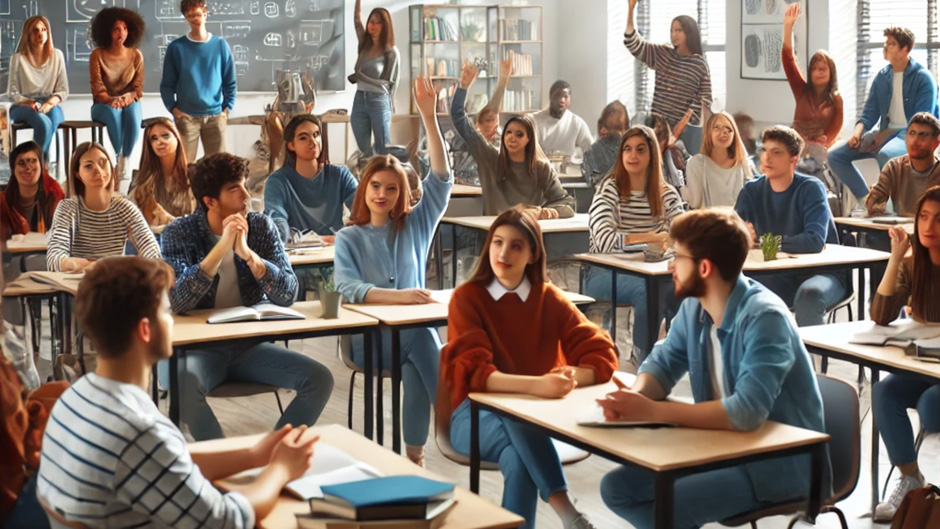In professor Lindsay Grace’s classes at the University of Miami School of Communication, he spends time teaching his students how to detect images and videos created by artificial intelligence (AI) that might look real but are computer-generated creations.
In one image he shows a classroom full of students, all wearing blue jeans. Some are facing each other instead of facing the front. Some of the desks in the image only have three legs instead of four.
“So, I ask the students: ‘Why is everybody wearing the same blue jeans?’” he said. “And why is one student facing the wrong way?’” he added.
Spotting inconsistencies and even absurdities are crucial to spotting artificially generated images, Grace said.
As AI technology becomes more sophisticated and prevalent in almost every field, there is an increased urgency to spot images and videos in social and mainstream media so the public can discern between the real and the manufactured, experts said.
The new AI synthetic technology offers countless opportunities for marketers, advertisers, and influencers to create these products. It can also offer chances for those bent on promoting disinformation to mislead in dangerous ways, leaving viewers to question reality, according to experts.
Grace, professor, Knight Chair of Interactive Media, and director of the M.F.A. in Interactive Media program, said the dangers around creating and disseminating altered images range from “creating an image that falsely depicts someone—such as nudes or individuals engaging in disparaging situations—to worst-case scenarios of unintended content of accidental symbols of hate, to unintended references to historical figures.”
As a result of the increase in the use of AI, many University professors are integrating classes on AI technology in their classes.
Marcia Gomez, lecturer at the School of Communication, teaches a class on AI in public relations, which she designed. She believes that it is crucial for the public to be consistently alert.
“We’re living in a ‘buyer beware’ environment when it comes to AI, but I think it’s a matter of ensuring we are all educated and stay vigilant,” said Gomez.
Both Gomez and Grace emphasize the fact that AI often is not perfect, so looking at images or videos closely can detect flaws.
“These inconsistencies occur because with generative AI, stitching algorithms do not have the kind of heuristic (hands-on) knowledge that humans do,” said Grace.
These are a few tips to detect computer created AI:
- Examine hands and limbs. This one is the most common tell. AI still struggles with realistic human anatomy, especially hands. Look for extra fingers, unnatural bending, extra arms, or missing knuckles. Example: The viral AI-generated image of Pope Francis in a puffer jacket had distorted hands, which gave it away.
- Analyze text within images. AI frequently produces gibberish or distorted text in images, which can be a giveaway. Example: AI-generated street with misspellings and gibberish.
- Inspect hair details. Hair can look blurry, clumped together, or overly smooth, rather than flowing naturally.
- Assess symmetry and geometry. AI sometimes produces warped buildings or asymmetric faces that don’t align correctly.
- Look for overly glossy or “rendered” quality. If it’s too perfect, take a closer look. AI-generated faces often appear too perfect, with unnatural smoothness or the “odd” glow.
- Check the background and details. Objects in AI-generated backgrounds may blend awkwardly, and shadows are in odd spots.
- Perform a reverse image search. Tools like Google Images or TinEye can help identify whether an image appears in unrelated sources or stock photo databases.
- Use AI detection tools. Automated tools like Sightengine and AI or Not can analyze images for synthetic elements.
“These detection tools help us identify a bit more seamlessly—but again, be vigilant,” said Gomez.

